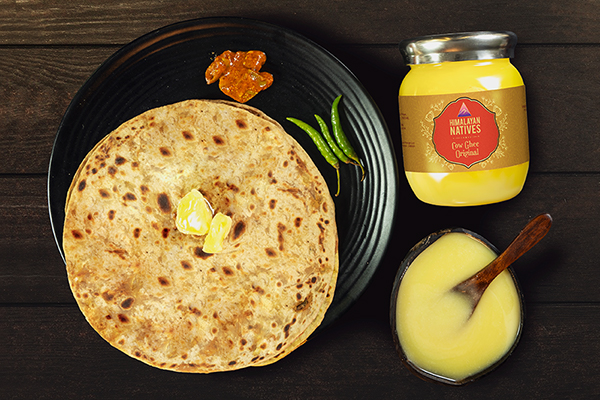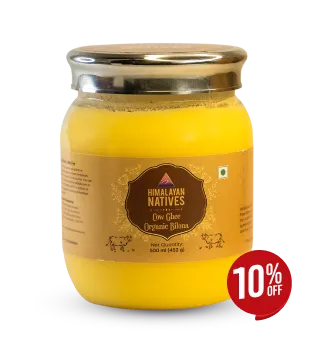
The fast-moving consumer goods (FMCG) sector is the fourth largest and fastest-growing sector in India. A combination of shifting lifestyle trends towards increased commercialization and government initiatives that encourage consumer spending has led to the rapid growth of the FMCG sector, not just in urban areas but in rural India as well. The food and beverages segment accounts for about 19% of the FMCG sector, and there is a growing demand in the packaged foods market, which is expected to be valued at close to US $70 billion by 2025. So, in a country with such a growing demand for packaged foods and shifting lifestyle choices, there are many challenges that a newer brand can face while trying to establish the brand while keeping up with the rapidly changing times. Himalayan Natives was launched in 2018, and as a newer player, we have faced many obstacles on the road to establishing ourselves as an industry leader. Let's take a look into some of the common challenges faced by new companies in the food industry.
Barriers to Entry for New Players in the Food Industry
Limited Access to Market Insights
A big reason many new food brands/startups fail is their inability to adequately research their target consumer’s needs, particularly because access to market insight reports can be expensive to obtain. The food industry is very broad and consists of consumers with a range of behaviors, purchase habits, disposable income, and product preferences. Conducting detailed market research to identify a new brand’s target market along with their specific buying habits and needs can sometimes be the determining factor in the brand’s success.
Himalayan Natives was founded with a clear understanding of who our target market is. Recognizing that extensive market research was a crucial element that would guide our entire business model, we made sure to raise sufficient funding to invest in research that explored our target market’s needs and the type of products that would align with their demand. During the initial stages, market research took up a bulk of our funding but we did not hesitate to invest in this as it was guaranteed to benefit us in the long run. This is one of the biggest reasons we have seen rapid growth in the last couple of years as we have been in tune with our consumer’s needs since the very beginning.
Not Investing in Brand and Package Design
In a market as saturated as the food industry, the differentiating factor between brands can often be in how consumers perceive the products, especially in a retail setting. The retail sale of food products makes up 70% of all food sales in India. This means that the differences in the style of packaging, informative labels, and branding elements used can often be the final factor that prompts a consumer to purchase one brand over another at the point of sale. Investing significantly and smartly in brand & product design can help increase brand awareness, brand recall as well as sales numbers.
Himalayan Natives invested a lot of resources and spent a great amount of time researching customer buying patterns, branding elements, and designs that can concisely communicate to our consumers everything they needed to know about our products. During the initial stages, we experimented with a branding style that did not perform too well in the market as the colors used were not distinctive enough. Following this, we invested in rebranding and tested the new branding and packaging elements in the market, and received an extremely positive response. In this sense, we constantly strive to make improvements in our designs in order to increase the market appeal of our product range.
Access to Distribution Channels
Particularly in the food and beverage sector, having an airtight logistical system is absolutely critical in ensuring continued success. This is owing to a lot of reasons - food items are perishable and have to be transported from point to point within a certain time period, the delivery of food products need to be quick and efficient due to high demand and the saturation of the food market with many brands means the demand for a particular brand’s products can be fleeting. An inability to secure an efficient supply chain can be the cause of a company’s shutdown.
Himalayan Natives from the very beginning obtained a solid supply chain by building a strong network of partners who helped us guarantee efficient deliveries. Due to this reliable network, we were also able to secure proper distribution channels in collaboration with local sourcing partners during the COVID-19 pandemic, which severely impacted movement and caused disruptions in the supply chains of many industries.
These are just a few reasons why many startups in the food and beverage industry often don’t even make it past the barriers of entry and end up having to close shop after making losses. However, even after establishing a brand in the already saturated food market, many companies can further face challenges in standing out from the competition and sustaining their business.
Challenges Faced in Sustaining Business
Economies of Scale
Often a lot of companies face difficulties competing against bigger brands that have been in the market for a while, due to an inability to match the same level of service and product prices. Economies of scale are a big reason why many new brands tend to exit the market, particularly when they are competing against incumbent brands for retail space, reliable sourcing partners, and consistent marketing efforts.
Himalayan Natives also faced this challenge during the initial stages. However, as our efforts to improve product quality and customer service resulted in a rapidly-growing demand for our products, we were able to scale up our business not just in the number of SKUs sold but also by expanding our product range within similar product categories. This has allowed us to bring down our cost per SKU and simultaneously compete against bigger brands and successfully establish ourselves as an up-and-coming FMCG player.
Inability to Innovate
Innovation is the driving force behind competition. In extremely saturated markets, the companies that can continually innovate to distinguish themselves from the competition are usually the ones that eventually become household names. This innovation can take many forms - product innovation, a unique marketing strategy, or even just a change in packaging or branding. The FMCG industry is such that while there is always a high demand, there is also almost always high competition. Consumers need compelling reasons to switch brands of everyday products, so the innovation of any kind that makes a brand stand out can be the determining factor in its continued success.
Himalayan Natives, as a natural food brand, unsurprisingly has had many competitors. However, our complete focus on improving the quality of our products, while also identifying our popular products and ramping up production to meet the demand has helped us establish ourselves as a premier natural food brand. Another contributing factor to our success has been our ability to navigate unpredictable challenges; the most notable being the recent COVID-19 pandemic, during which we identified a quickly growing demand for hygiene and protective gear products and launched our Himalayan Natives Care (HNC) line.
While there are many new companies in the FMCG sector that fail to innovate, the ones that do succeed to innovate and stand out face the next hurdle of planning a strategy that can sustain their business in the long run.
Himalayan Natives Strategy for the Future
Himalayan Natives has seen steady growth in the last few years, despite the setbacks caused by the pandemic. Our strategy for the future has been created with a strict focus on the quality of both our products and our customer service. Keeping a keen eye on the shifting lifestyle trends will determine the type of products that will remain or increase in demand, and will help us guide our future strategy.
After having successfully launched a few products in our Organic line, we aim to increase the product range under this category based on increasing demand and a gradual but sure shift towards eco-friendly and sustainably farmed food products to match the changing lifestyles of our target market. We also plan to launch more SKUs based on our current market research insights and will eventually expand to other markets in the Middle East, UK, and Europe.
No matter what industry you are in, launching a new startup can be very challenging, sometimes even scary. The 21st century has brought with it many rapid advancements in technology and changing ideologies, which has prompted a new landscape for businesses that is cut-throat at every turn. The FMCG industry is a prime example of this landscape, and a new business trying to establish itself can be faced with many hurdles to overcome every step of the way. Starting from the barriers to entry to the industry, to ensuring factors such as economies of scale and innovation are adequate enough to sustain a business, changing consumer preferences and unpredictable events such as a pandemic can easily throw off a company from its planned strategy. Himalayan Natives has successfully navigated the cut-throat world of the FMCG industry so far, and we are excited to see what the future holds.
 HELPFUL1 people found it helpful
HELPFUL1 people found it helpful
Related Blogs
Subscribe to Our Blogs
and never miss on the latest update!

















